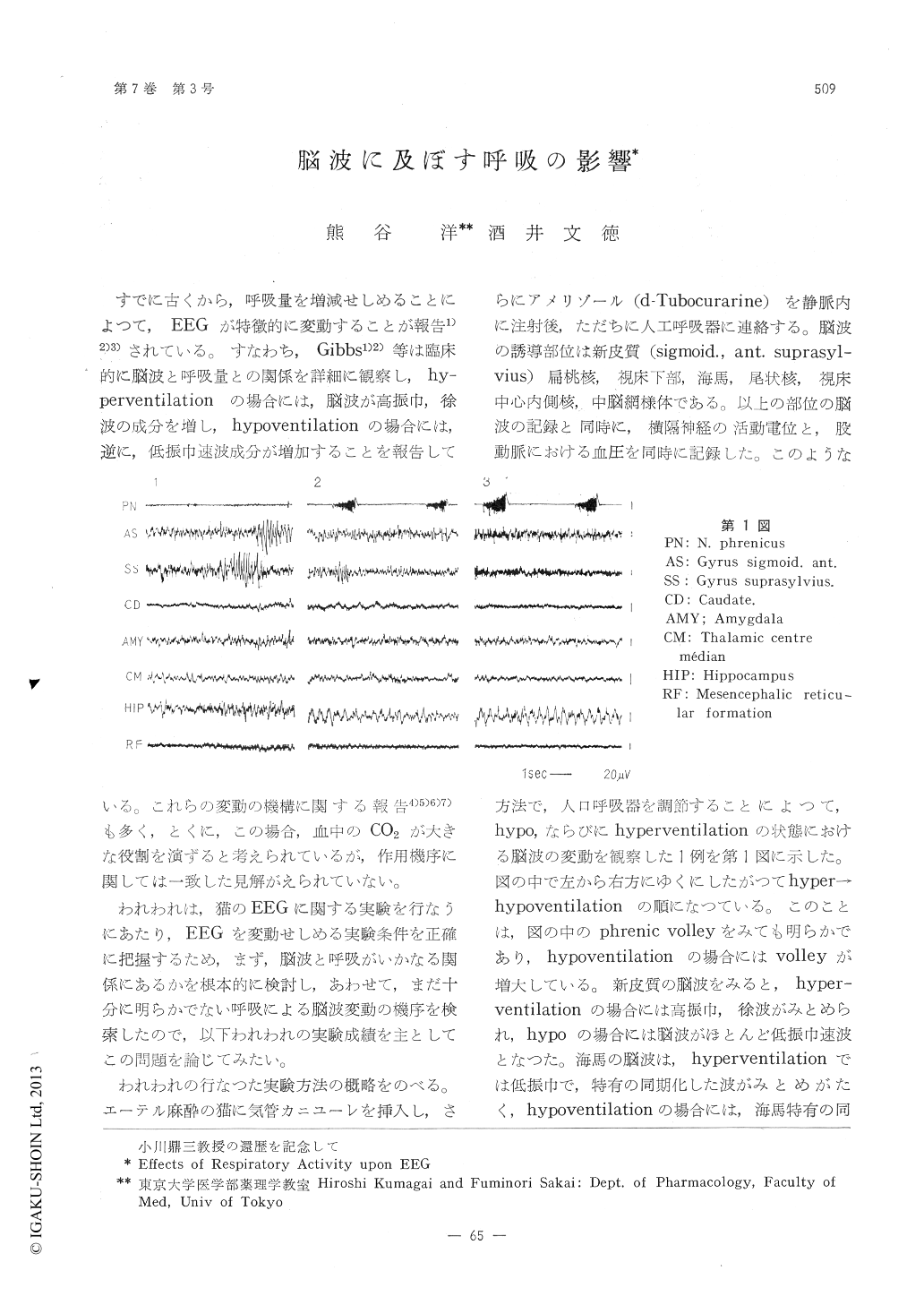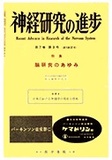Japanese
English
- 有料閲覧
- Abstract 文献概要
- 1ページ目 Look Inside
すでに古くから,呼吸量を増減せしめることによつて,EEGが特徴的に変動することが報告1)2)3)されている。すなわち,Gibbs1)2)等は臨床的に脳波と呼吸量との関係を詳細に観察し,hyperventilationの場合には,脳波が高振巾,徐波の成分を増し,hypoventilationの場合には,逆に,低振巾速波成分が増加することを報告している。これらの変動の機構に関する報告4)5)6)7)も多く,とくに,この場合,血中のCO2が大きな役割を演ずると考えられているが,作用機序に関しては一致した見解がえられていない。
われわれは,猫のEEGに関する実験を行なうにあたり,EEGを変動せしめる実験条件を正確に把握するため,まず,脳波と呼吸がいかなる関係にあるかを根本的に検討し,あわせて,まだ十分に明らかでない呼吸による脳波変動の機序を検索したので,以下われわれの実験成績を主としてこの問題を論じてみたい。
In curarized, artificially ventilated cats, the pattern of EEG shifted towards drowsiness under hyperventilation and,conversely, towards arousal under hyopoventilation. To elucidate the mechanism of EEG arousal the effect of discontinuing artificial respiration upon EEG pattern was studied as an extreme case of hypoventilation. The discontinuance of respiration for a short period of time produced EEG arousal, blood pressure rise and enhanced phrenic herve volley. In the animals where bilateral adrenalectomy and pretrigeminal transection of the brain stem were carried out, singly or concomitantly, a conspicuous parallelism in alterations of EEG and phrenic volley was observed. The EEG arousal due to hypoventilation was most likely to be the result of increased activity of CO2-sensitive structures, including the respiratory centers, which are located in the brain stem. Many cases exhibited a spontaneous EEG fluctuation in which two types of activities a laternated at regular intervals. The periodicity of brain wave and that of phrenic nerve volley were exactly the same in most cases of these animals. When a piece of phencyclidine-soaked filter paper was topically applied onto the cortical surface, the periodic EEG activity became remarkable in the localized area to which the drug had been applied. This pericdic activity, however, was hardly noticed in the cases where the neocortical EEG was of desynchronization or the phrenic volley was of high frequency. These findings suggest the striking influence of respiratory activity upon EEG.

Copyright © 1963, Igaku-Shoin Ltd. All rights reserved.


